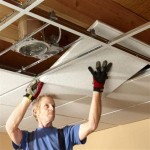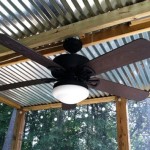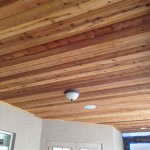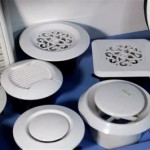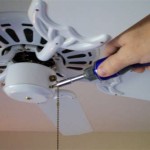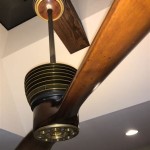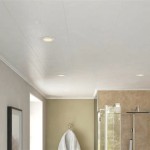Choose The Right Kitchen Ceiling Paint For Perfect Looks
The kitchen ceiling, often overlooked during renovation or redecoration projects, plays a significant role in the overall aesthetics and functionality of the room. Selecting the correct paint for this surface is crucial for achieving a visually appealing, durable, and practical space. The kitchen environment, characterized by moisture, heat, and grease, necessitates a paint specifically formulated to withstand these conditions. This article will explore the key considerations for choosing the right kitchen ceiling paint, focusing on finish, type, and specific properties required for long-lasting performance.
Understanding the Environmental Factors Affecting Kitchen Ceiling Paint
The kitchen presents a unique set of challenges that differentiate it from other rooms in the house. The primary concern is the high level of moisture produced during cooking, from boiling water to simmering sauces. This moisture can condense on the ceiling, leading to the growth of mold and mildew if the paint is not properly resistant. Furthermore, the heat generated by ovens, stovetops, and other appliances can cause paint to blister or crack over time. Grease splatters and cooking fumes also contribute to the degradation of the paint finish, making it difficult to maintain a clean and fresh appearance.
Therefore, the ideal kitchen ceiling paint must possess excellent moisture resistance to prevent mold and mildew growth. It should also be able to withstand high temperatures without deteriorating. Crucially, the paint should be easy to clean, allowing for the effortless removal of grease and other stubborn stains. Neglecting these factors can lead to premature paint failure, requiring frequent repainting and potentially causing structural damage to the ceiling itself. Properly preparing the ceiling surface is also essential before applying any paint to ensure optimal adhesion and longevity.
Selecting the Appropriate Paint Finish
The finish of the paint refers to its sheen, or the amount of light it reflects. Different finishes offer varying levels of durability, washability, and aesthetic appeal. For kitchen ceilings, certain finishes are generally more suitable than others, primarily due to the demands of the kitchen environment. The most common and recommended options include flat, matte, eggshell, and satin finishes.
Flat Finish: Flat paint has the lowest sheen and offers a non-reflective surface. While it excels at concealing imperfections in the ceiling, such as minor dents or uneven textures, it is less durable and more difficult to clean than other finishes. Flat paint is more porous, making it susceptible to staining and moisture damage. Therefore, flat paint is generally not recommended for kitchen ceilings unless a specialty paint specifically designed for kitchens is used.
Matte Finish: Similar to flat paint, matte finish has a low sheen, offering excellent concealment of imperfections. Matte paints are often slightly more durable and easier to clean than flat paints, but still less so than eggshell or satin finishes. While some modern matte paints are formulated with improved stain resistance, they may still not be the most practical choice for a high-traffic kitchen where grease and moisture are prevalent.
Eggshell Finish: Eggshell paint boasts a soft, subtle sheen that resembles the surface of an eggshell. It strikes a balance between concealing imperfections and providing good durability and washability. Eggshell paint is more resistant to moisture and stains than flat or matte finishes, making it a suitable option for kitchen ceilings. It is relatively easy to clean with mild soap and water, which is important for removing grease splatters and other cooking-related messes.
Satin Finish: Satin paint has a slightly higher sheen than eggshell, offering increased durability and washability. It is highly resistant to moisture, stains, and scuffs, making it an excellent choice for kitchen ceilings. The smoother surface of satin paint makes it even easier to clean than eggshell, requiring less effort to remove stubborn marks. However, the higher sheen also means that it is less effective at concealing imperfections in the ceiling. Therefore, proper surface preparation is crucial when using satin paint.
Ultimately, the best paint finish for a kitchen ceiling depends on the specific needs and preferences of the homeowner. If concealing imperfections is a primary concern, eggshell or matte may be preferable. However, if durability and ease of cleaning are prioritized, satin is often the better choice. In all cases, it is essential to select a high-quality paint formulated for interior use and specifically designed to resist moisture and mildew.
Choosing the Right Type of Paint
In addition to the finish, the type of paint is a critical consideration for kitchen ceilings. The two main types of paint are latex (water-based) and oil-based. While oil-based paints were traditionally favored for their durability, latex paints have made significant advancements and are now the preferred choice for most interior applications, including kitchen ceilings. Latex paints offer several advantages over oil-based paints, including lower VOC emissions, easier cleanup, and better color retention.
Latex Paint: Latex paints are water-based, making them easy to apply, clean up with soap and water, and low in volatile organic compounds (VOCs). Lower VOC content contributes to improved indoor air quality. Latex paints also offer excellent flexibility, allowing them to expand and contract with temperature changes without cracking or peeling. This flexibility is particularly important in kitchens where temperature fluctuations are common. Latex paints are available in a wide range of colors and finishes, providing ample options for achieving the desired aesthetic. For kitchen ceilings, it is crucial to choose a latex paint specifically formulated for kitchens and bathrooms, as these paints contain mildewcides and other additives that enhance their moisture resistance.
Oil-Based Paint: Oil-based paints are known for their durability and hard, glossy finish. However, they contain high levels of VOCs, which can be harmful to human health and the environment. Oil-based paints also require the use of solvents for cleanup, making the process more cumbersome and hazardous. Furthermore, oil-based paints tend to yellow over time, especially in areas exposed to sunlight. While they offer excellent stain resistance, the disadvantages of oil-based paints generally outweigh the benefits for kitchen ceiling applications. The strong fumes during application and the difficulty in cleaning brushes and equipment make latex paints the more accessible and safer selection.
Beyond latex and oil-based paints, specialty paints designed for specific purposes are also available. For example, anti-condensation paints can be used on kitchen ceilings to reduce the formation of condensation, minimizing the risk of mold and mildew growth. These paints often contain micro-porous structures that absorb moisture and release it slowly, preventing water droplets from forming on the surface. Similarly, paints with enhanced thermal properties can help to insulate the ceiling, reducing heat loss and improving energy efficiency. These specialty paints can be particularly beneficial in older homes with poor insulation.
Essential Properties for Kitchen Ceiling Paint
Beyond finish and type, specific properties of the paint are crucial for ensuring optimal performance in the kitchen environment. These properties include moisture resistance, mildew resistance, scrubbability, and stain resistance. Selecting a paint that excels in these areas will contribute to a cleaner, more durable, and visually appealing kitchen ceiling.
Moisture Resistance: As previously discussed, moisture is a significant concern in kitchens. The paint must be able to withstand high humidity levels and prevent water from penetrating the surface. Opting for a paint formulated with moisture-resistant additives will help to prevent blistering, peeling, and other forms of moisture damage. Look for paints that are specifically labeled as being suitable for bathrooms or kitchens, as these typically offer superior moisture resistance.
Mildew Resistance: Mold and mildew can thrive in damp environments, such as kitchens and bathrooms. Selecting a paint that contains mildewcides will help to prevent the growth of these organisms. Mildewcides are chemicals that inhibit the growth of mold and mildew, keeping the ceiling clean and healthy. Ensure the paint label specifically mentions mildew resistance or contains mildewcides. Proper ventilation is crucial in conjunction with mildew-resistant paint to further reduce the risk of mold and mildew growth.
Scrubbability: Kitchen ceilings are prone to accumulating grease splatters, dust, and other debris. The paint must be able to withstand frequent cleaning without losing its color or finish. Scrubbable paints are designed to resist damage from scrubbing, allowing for the easy removal of stains and grime. Satin and eggshell finishes are generally more scrubbable than flat or matte finishes. Always follow the manufacturer's instructions for cleaning painted surfaces to avoid damaging the finish.
Stain Resistance: Kitchen ceilings can be exposed to various types of stains, including grease, smoke, and food splatters. The paint must be resistant to these stains, preventing them from penetrating the surface and causing permanent discoloration. Stain-resistant paints are formulated with additives that repel stains, making them easier to clean. Look for paints that are specifically labeled as being stain-resistant or easy to clean. A quality primer can also enhance the stain resistance of the topcoat.

Painting Kitchen Ceilings Pictures Ideas Tips From

Painting Kitchen Ceilings Pictures Ideas Tips From

86 Designer Approved Kitchen Paint Color Ideas For 2025

The Best Paint Colors For Rooms With Lots Of Natural Light Complete Guide Paintzen

20 Breathtakingly Gorgeous Ceiling Paint Colors And One That Isn T Laurel Home
:max_bytes(150000):strip_icc()/painted-ceiling-sara-0918-de610c908f15460e97ebea2e330ceece.jpg?strip=all)
12 Ceiling Paint Colors That Add Drama To Any Room
:max_bytes(150000):strip_icc()/Screenshot2023-10-18at10.58.23AM-ac8cbc31e9d64cc99e9d7feb25e3d16d.png?strip=all)
14 Charming Kitchen Ceiling Ideas For The Heart Of Home

40 Best Kitchen Color Ideas For 2024

4 Creative Ceiling Designs To Take Your Kitchen The Next Level American Tin Ceilings

20 Breathtakingly Gorgeous Ceiling Paint Colors And One That Isn T Laurel Home
Related Posts


